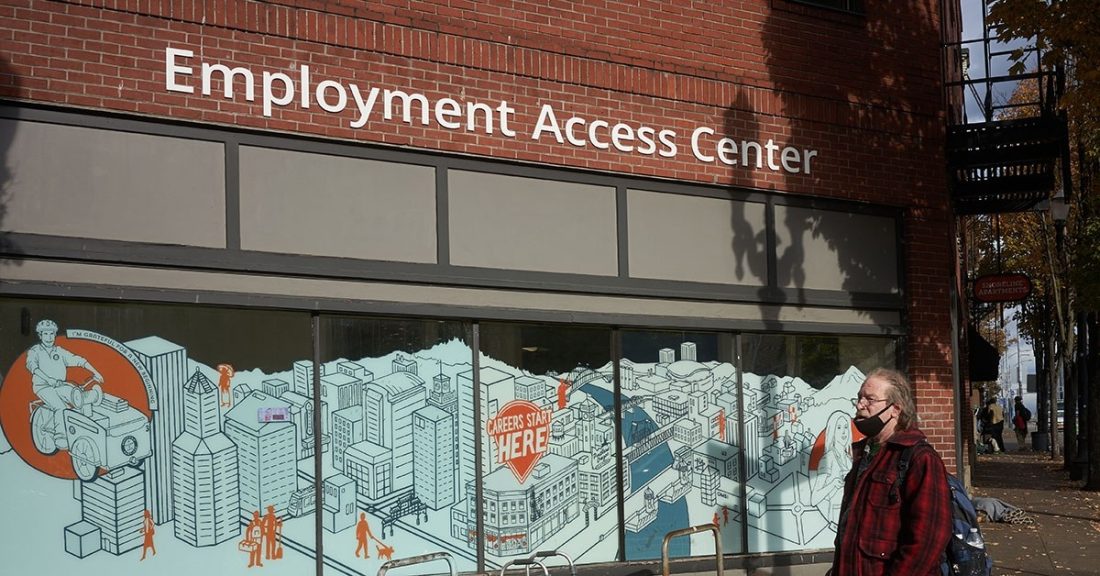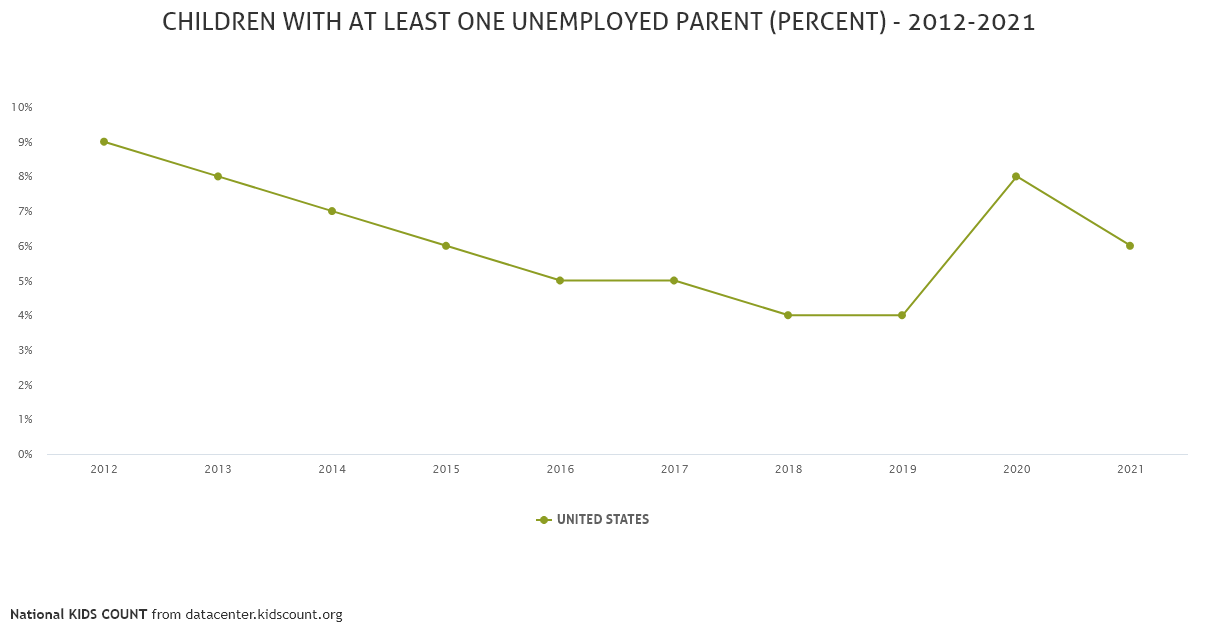In 2021, Families Continue to Recover From Pandemic-era Job and Income Losses

The share of U.S. children with at least one unemployed parent doubled in 2020, the year of the COVID-19 outbreak, from 4% in 2019 to 8% — equivalent to about 5.85 million kids. In Nevada and Hawaii, this figure reached highs of 15% and 14%, respectively, in 2020. The U.S. percentage began to recover in 2021, declining to 6%, according to the latest data from the Census Bureau’s Current Population Survey. These data describe children with unemployed parents who had been actively looking for work in the past month and were currently available for work. For kids in single-parent families, it means that the resident parent was unemployed, and for children in two-parent families, it means that either or both parents were unemployed.

Following the same pattern, the unemployment rate of parents jumped from 3% in 2019 to 7% in 2020, and then dropped back down to 4% in 2021. Nevada and Hawaii, similar to above, had the highest parental unemployment rates in 2020, at 12% and 11%.
Just Over 60% of U.S. Parents or Caregivers Are Employed in 2022
The Census Bureau also measures parental and caregiver employment through its Household Pulse Survey, which found that, from Jan. 26 to Feb. 7, 2022, 62% of U.S. adults in households with children were employed in the past week. This figure fluctuated between 60%-65% for the last year and a half, from August 2020 to February 2022, but dipped below 60% a few times right after the start of the pandemic in May through July 2020.
At the state level, parent/caregiver employment levels are much more wide-ranging. For instance, from Jan. 26 to Feb. 7, 2022, less than half (49%) of Oklahoma adults in households with kids were employed in the past week, contrasted by 79% in New Hampshire.
Family Reports of Lost Employment Income Increasing in 2022
While peak parental unemployment levels have partially recovered since the early days of the COVID-19 pandemic, new data indicate that many families still are facing serious economic difficulties. The Household Pulse Survey data from the period ending Feb. 7, 2022, revealed that nearly one in four (23%) U.S. households with children lost employment income in the past month, up from 19% in Dec. 1–13, 2021. State-level data reflect this family strain, as well, with a third (32%) of Louisiana households with kids losing employment income in the latest 2022 period, and more than a fourth of households with children losing income in nine other states.
Racial and Ethnic Inequities in Parental Employment and Lost Income
These data also show that the financial hardships of the last two years hit some families of color harder than others. Nationwide, Black, Latino, and two or more races/other race households with children consistently had lower estimates of employment and higher estimates of lost employment income, compared to those for white and Asian American households, based on Household Pulse Survey data available from 2020 to present. To illustrate, the latest data from Dec. 29, 2021, to Feb. 7, 2022, show that a third (33%) of Latino households with kids and 30% of Black and 28% of two or more races/other race households with kids lost employment income in the past month, while the same was true for just 17% of white and Asian American households.

When parents experience unemployment or underemployment, it can cause financial insecurity and stress, which may interfere with their ability to meet children’s basic needs and provide a stable, nurturing home environment. Policymakers and other leaders can work together to strengthen the safety net for families, address root causes of racial/ethnic inequities and ensure that families have a range of support services to help them provide stability for their children, including accessible mental health care.
See More Data on Employment and Economic Well-Being
The KIDS COUNT Data Center offers a robust selection of indicators on employment and economic well-being, with many available for youth adults and by family nativity and race and ethnicity.
Stay Connected with the Data Center
Sign up for our newsletters to get the latest data, reports and other resources.






